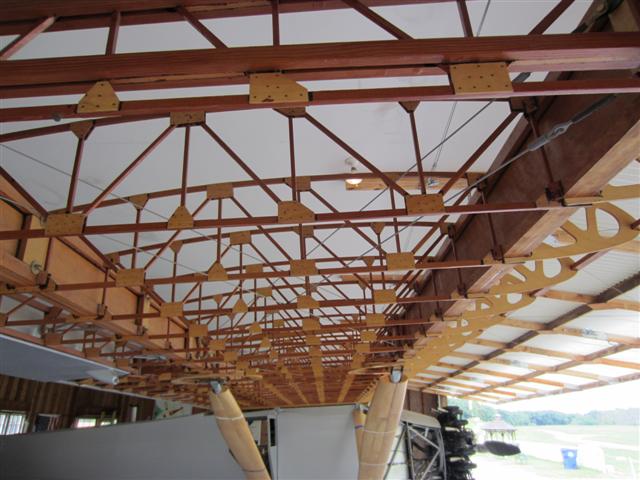aggie79 wrote:Keep in mind that there is only a single 1/2" or 5/8" diameter pin that keeps your trailer hitch - and your teardrop trailer, standy, etc. - tied to the receiver of your tow vehicle.
Yup, and that little 5/8 dia hitch pin (0.307 cross sectional area) can take about 14700 of force in double shear before thinking about failing. But we must remember that a receiver hitch is specifically designed to only put shear (and some impact) loads on the pin. The bearing and torsion loads are transmitted through the receiver tube, distributing them over wide lever arms to the hitch frame and onto the TV.
Here is
more than you ever wanted to know about metal fasteners and wood joints.
I can't be bothered to work through all that. The TLAR method says use glue and spread the fasteners out evenly to develop the overall strength of the structure.
For the wall to floor join, my walls will be glued on top of my floor and will be screwed every 10 to 12 inches using wimpy looking Kregg screws. The counter bores for the Kregg screws will be sealed and filled, then the outer canvas and paint skin (or glass reinforced epoxy... haven't decided yet) will be wrapped down the wall and under the floor.
I've got (16) 3/8 inch bolts to hold the floor to the trailer frame, (12) of which are spread evenly around the perimeter, and (4) equally in the field. These screw up (through tabs and angle xmbr's in the trailer frame) blindly into threaded inserts that were embedded into the floor frame from the top before the top floor skin was applied. I also plan on bedding the cabin into sealer applied to the tops of the trailer frame members. This is mostly for water exclusion, but will add quite a bit of adhesive strength, as well.
Between the walls being glued to the floor, the outer skin wrap being fully "glued" to the whole cabin (sock effect on roof, walls and floor) and the wrap being captured between the cabin and trailer, the handful of Kregg screws are really only there to keep things aligned and tight during glue up.
Granted TPCE is a hybrid construction, but my point is that it is the sum of all the little strengths that add up to that 14700 lb. capacity.
Okay, I know that the math doesn't necessarily translate directly that way, but by building up the strength through distribution using light weight methods spread over large areas, you will create an amazing strong structure out of seemingly weak components. Don't assume that you need a bunch of huge fasteners. The glue is where most of the joint strength comes from.
This Spirit Of St Louis replica wing is made up from thin ply, tiny dowel pins and glue... no bolts or screws at all (okay, there are a couple of wire stays for tensioning). Any one of these components could be snapped like a twig in your hand, but together, in the proper orientation, they take a huge load and transfer it efficiently.

Is anyone sick of seeing this pic? I'm not.









 glue and screws it is for me
glue and screws it is for me 